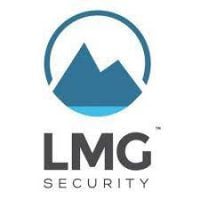8 min read
9 Cybersecurity Budget Tips that Deliver the Most Bang for Your Buck
It’s budget time and many organizations are wondering how to allocate their cybersecurity dollars for 2023. As we see it, the ultimate goal of your...
We've crafted solutions tailored to your firm
The world of insurance for law firms can be confusing, and difficult to navigate. We've created this glossary because these common insurance terms should be easy to understand.
4 min read
 LMG Security
:
Updated on November 21, 2023 | Posted on August 16, 2022
LMG Security
:
Updated on November 21, 2023 | Posted on August 16, 2022

It’s no secret that security risks keep increasing. The 2022 Verizon Data Breach Investigations Report found a 13% year over year increase in ransomware—a surge that was greater than the past 5 years combined. Executive teams now recognize that successful cyberattacks can be devastating to any organization, as evidenced by the 2022 Gartner Board of Directors Survey that found 88% of board members note cybersecurity risks as business risks. With an increasing number of contractual cybersecurity requirements from cyber insurers, partners, and customers, it’s more important than ever to ensure your organization has an efficient and effective cybersecurity program. To help you balance your budget and cybersecurity needs, we’ve compiled a list of the top security tools and some additional resources to help your organization select the technologies that will deliver the biggest bang for your cybersecurity buck. Let’s get started!
5 Tools that Deliver the Biggest Bang for Your Buck
While there are a broad range of fantastic cybersecurity solutions on the market, our team has compiled the five crucial security tools that every organization should have in 2022. We hope you can check all of these off your list!
Get started today with free MFA implementation videos that provide step-by-step instructions for deploying popular MFA services from Microsoft 365, G-Suite, and Duo (which supports SSO and has advanced management capabilities). If you are looking for best practices and advice on what solution is best for your organization, read this MFA tip sheet.
Watch this video case study on how backup policies and testing can be critical after a data breach.
Don’t Get Distracted by the New Shiny Solution
With the tremendous amount of cybersecurity solutions on the market, it’s important that you implement the foundational tools and strategies (including the five top tools in this article) first—don’t get distracted by shiny new security technologies. Start with these low hanging fruit strategies and tools, and invest in the people and necessary employee hours to build a strong cybersecurity foundation. Save the new, shiny solutions for consideration as your cybersecurity maturity grows. For more information, read these blogs on creating an effective cybersecurity plan and planning your cybersecurity maturity gains.
If you are not sure where to begin, contact the team at LMG Security and they will be happy to answer any questions.
This blog is distributed with the permission of LMG Security.
At LMG, our singular focus is on providing outstanding cybersecurity consulting, technical testing, training, and incident response services. Our team of recognized cybersecurity experts have been covered on the Today Show and NBC News, as well as quoted in the New York Times, Wall Street Journal, and many other publications. In addition to online cybersecurity training, LMG Security provides world-class cybersecurity services to a diverse client base located around the United States and internationally.

8 min read
It’s budget time and many organizations are wondering how to allocate their cybersecurity dollars for 2023. As we see it, the ultimate goal of your...

5 min read
Cybersecurity requirements are ramping up, and cybercrime continues to increase. The FBI’s Internet Crime Report shared that there was a ...

5 min read
“There is no business strategy without a cloud strategy,” said Milind Govekar, vice president at Gartner. Gartner predicts that in 2022 global cloud...